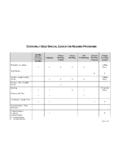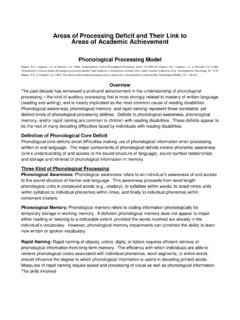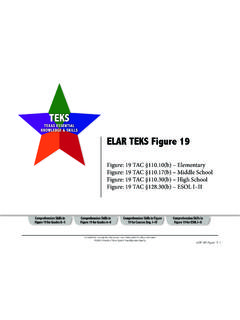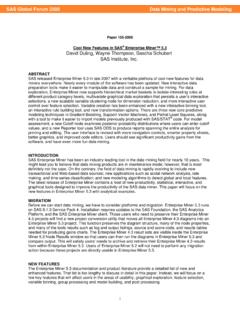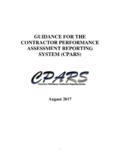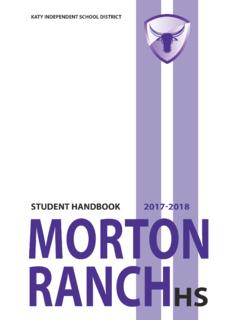Transcription of Revised STAAR English I and II Assessments - …
1 Revised STAAR English I and II Assessments As of spring 2014, the English I and II reading and writing Assessments will be combined to become one assessment English I and English II EOC. The chart below was adapted from TEA released chart which demonstrated the difference between the separate reading and writing tests and the newly Revised combined test. This information is intended to help teachers and administrators understand the new time constraints of the redesigned test, as well as revisit the instructional implications of the English I and II. STAAR content. Redesigned STAAR English Reporting Categories Instructional Implications (Embedded Field Testing). Students will need to think critically/inferentially about texts (read Reporting between and beyond the lines). Category 1: Students will need to understand what makes a connection between Understanding/ texts thematic or meaningful Analysis Across Short answer questions: students will need to know the difference Genres between effective and flawed text evidence and know how to stay inside the text to find evidence Examples of connecting questions stems: 6 multiple choice (MC) o What is one similarity or difference between the two selections or 2 short answer questions (SA) between the narrators/ speakers/characters/authors in the two selections?
2 O What is a theme or idea explored in both selections? Is the central message of the two selections the same? o How does a particular quotation from one selection link/correspond thematically to a quotation from the other selection? Reporting Category 2: Because STAAR routinely employs dual-coding using F19B and a Understanding/Analysis of genre knowledge and skill statement, students will need to make 11 MC. Literary Texts complex inferences in all genres, beyond demonstrating the specific Reporting Category 3: skills listed in individual Student Expectations Understanding/Analysis of Dual-coded questions tend to ask about author's craft. Students Informational Texts should be able to identify author's tools and articulate how they affect meaning Student will need to understand and apply the specific academic vocabulary associated with literary and informational reading Examples of author's craft stems: o Why does the author include a particular paragraph?
3 11 MC o Why does the author begin or end a piece in a particular way? o Why does the author include a description of XX? o How does a poet, playwright, or author use imagery, simile, metaphor, hyperbole, personification, time disruptions (flashback, foreshadowing) to create meaning? o How does the author organize the selection? Why does the author organize the information in a particular way? Poetry has been represented widely in the 2013 released tests. All genres Selection Breakdown should be taught through reading and writing. Different texts of different 4 selections genres should be compared. (1 pair/2 single selections). Reading Base Test 28 MC, 2 SA. Embedded Reading Field- Test 7 MC, 1 SA (1 pair OR single selection). It Chart continues Redesigned STAAR English Reporting Categories Instructional Implications (Embedded Field Testing).
4 Goal: moving all students from the lower half of the score-scale range 1 essay to the upper half of the range Reporting Category 4: English I expository Teachers should understand the rubric for each type of writing Composition English II persuasive assessed and know the differences between the levels of writing performance Students should understand the language of the rubric and make accurate judgments about their own writing through the writing process. Students should know how to independently solve problems or roadblocks in their own writing. Teachers should balance writing instructions to ensure students are writing pieces of varying lengths and for different purposes. Teachers should remember that limited or formulaic strategies that short-cut the thinking/writing process do not prepare students for STAAR (or academic success).
5 Teachers should create a writing classroom that allows students the time and space to think their way through a topic, to understand writing for an outside audience, and to practice their skills in a safe . environment. English I Expository Essay: o Students should read all the way through all parts of the prompt to know what the real topic or issue is. o Students must have a thesis statement that is supported throughout the essay. o Students must keep their outside audience in mind. o Students should know the different ways to organize expository writing: anecdotes, examples, compare/contrast, and cause/effect are examples. English II Expository Essay: o Students should be able to understand the central issue of the prompt. o The depth of the argument matters more than the breadth. o Students should understand the purpose of persuasive writing.
6 To convince the reader with a clear position. o Students should rely on what they really know and understand to convince their audience: what they've read, seen, and discovered through books, movies, televisions, news, and history. They should NOT use false evidence. o Students should understand the different organizational structures may be more effective in persuading their audience, for example, a writer might placer her strongest evidence at the end. Reporting Category 5: Teachers should focus vocabulary and grammar instruction on 11 MC. Revision application, not on memorization. Students should understand that revision and editing are two different processes. Students should have multiple opportunities to practice Reporting Category 6: Editing 11 MC both Passage Breakdown 4 passages (2 revision/2 editing). Writing Base Test 22 MC, 1 essay Embedded Writing Field-Test 6 MC (attached to 1 passage), 1.
7 Items essay Total Number of Base-Test 50 MC, 2 SA, 1 essay Items Total Number of Items 63 MC, 3 SA, 2 essays (including field test). Redesigned STAAR English Testing Characteristics Instructional Implication (Embedded Field Testing). Time Limit 1 day, 5-hour testing window One score only no separate reading Students should be reading and writing in and writing scores the different genres continuously. Teachers should emphasize that good Reading and writing contribute equally to the writers are good readers. Students should total score: see the connections between reading and Weighting of Each Component writing. Understanding how an author crafts 30% reading multiple choice a piece can help students learn how to craft 20% short answer questions their pieces for better efficacy. 24% writing multiple choice 26% essay Students who do not achieve Level II.
8 Retesting in Spring 2014 and are required to retake the entire Beyond assessment Redesign information from the Texas Education Agency, Student assessment Division, September 2013: STAAR English I and II Assessments Revised Blueprints Instructional Implication information from presentations delivered by Victoria Young, Director of Reading, Writing, and Social Studies Assessments , Texas Education Agency STAAR English I, II, and III Writing: Texas assessment Conference 2012 (PDF posted 12/07/12). STAAR Grades 3-8 and English I, II, and III Reading: 2013 CREST Presentation (PPT posted 04/10/13).
